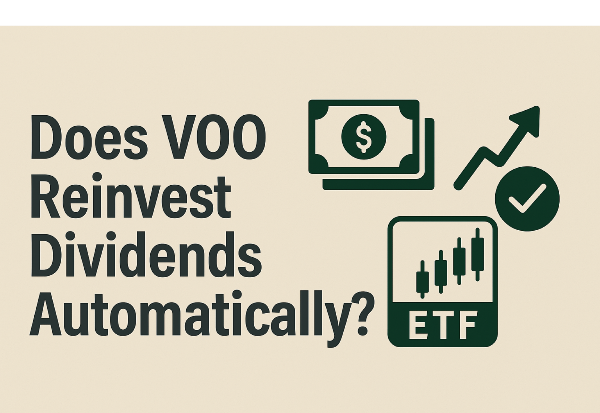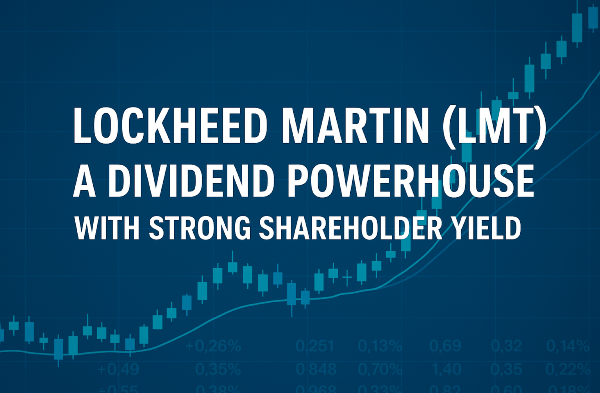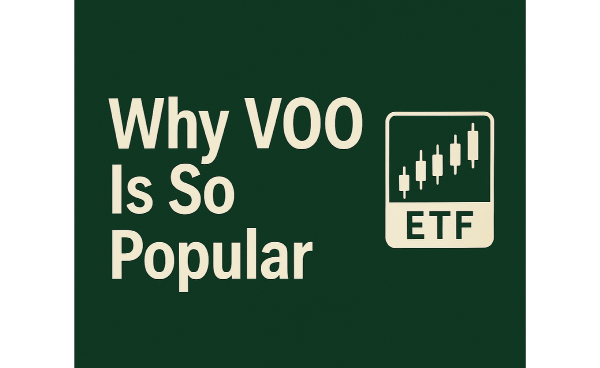Understand the long-term performance, diversification, and cost efficiency of Vanguard’s VTI and VOO to determine which ETF best suits your investment goals.
Exploring Vanguard ETFs for Long-Term Growth
Vanguard’s ETF lineup has become a cornerstone for investors building lasting wealth. Two popular options are VOO, which tracks the S&P 500, and VTI, which covers the entire U.S. stock market. VOO provides concentrated exposure to 500 large-cap companies celebrated for their stability and consistent returns. In contrast, VTI offers broader diversification by including small-, mid-, and large-cap stocks, appealing to investors who want wider market exposure. Long-term investing demands a balance between growth potential and risk management, and comparing these two ETFs is essential for those seeking stability, growth, and diversified exposure. Which approach is better over the long term—VOO’s focused large-cap stability or VTI’s expansive market coverage? This article will review each ETF’s investment style, compare their portfolio compositions and risk profiles, assess tax and expense considerations, and conclude with recommendations tailored to various investor profiles. Understanding these factors will help investors align their choices with their long-term financial goals.
Overview of VOO
VOO is Vanguard’s S&P 500 ETF, designed to track the performance of the S&P 500—a market-cap weighted index of the largest U.S. companies. By mirroring this index, VOO allocates its assets in proportion to each company’s market capitalization. This means that industry giants like Apple AAPL and Microsoft MSFT have a significant impact on the fund's overall performance.
VOO provides exposure to a diversified portfolio of well-established companies across several sectors. The ETF emphasizes stability, steady dividend yields, and reliable performance by including firms known for their consistent track records.
Conservative investors appreciate that low fees and a proven track record contribute to long-term wealth accumulation. In a recent episode of The Investor’s Podcast Network, experts noted, “Stability and low-cost exposure drive long-term gains” (🎧 12:45). Similarly, Morningstar’s Investing Insights highlighted that “low fees and market efficiency are key to building wealth over time” (🎧 15:20). These insights affirm why VOO remains a preferred choice for many investors.
Sources:
Vanguard Official Website – VOO Profile
Investopedia – Overview of Vanguard S&P 500 ETF (VOO)
The Investor’s Podcast Network
Morningstar’s Investing Insights
Overview of VTI: Comprehensive Exposure to the U.S. Stock Market
VTI is Vanguard’s Total Stock Market ETF designed to mirror the performance of the entire U.S. equity market. The fund covers small-cap, mid-cap, and large-cap stocks through a market-cap weighted strategy that tracks the CRSP U.S. Total Market Index. By holding thousands of securities across nearly every sector, VTI offers extensive diversification that captures the breadth of the American economy.
The broader diversification of VTI may lead to higher growth potential compared to funds that focus solely on large-cap stocks. However, including small- and mid-cap companies increases volatility and alters the fund’s risk-return profile. When compared to Vanguard’s S&P 500 ETF, VOO—which concentrates on stable, large-cap companies with consistent dividend yields—VTI stands out for its more aggressive, all-market approach.
Insights from industry experts further underline VTI’s strengths. In a recent episode of The Investor’s Podcast Network, hosts remarked, “Broad market exposure can boost growth, despite periods of increased volatility” (🎧 11:30). Similarly, Morningstar’s Investing Insights emphasized that “diversification across all market caps provides a solid foundation for long-term wealth building” (🎧 14:20). These observations help investors appreciate VTI’s strategic role in portfolios aimed at capturing the full potential of the U.S. stock market.
Sources:
Vanguard Official Website – VTI Profile
Investopedia – Overview of Vanguard Total Stock Market ETF (VTI)
The Investor’s Podcast Network
Morningstar’s Investing Insights
Comparative Analysis: Portfolio, Risk, and Performance
VOO tracks the S&P 500 index and maintains a concentrated exposure to large-cap companies, resulting in a portfolio dominated by household names like Apple AAPL and Microsoft MSFT. In contrast, VTI tracks the CRSP U.S. Total Market Index and covers small-, mid-, and large-cap stocks, offering nearly universal market exposure.
This broader allocation means that while VOO’s holdings are more concentrated, VTI’s inclusiveness provides additional growth opportunities from sectors and companies that are not represented in the S&P 500. The varied sector weightings in VTI introduce a different risk profile, whereas VOO is generally more stable.
Historical performance and volatility metrics further differentiate these ETFs. VOO’s concentrated focus on large-cap stocks often leads to steadier returns, particularly during market downturns where defensive characteristics are paramount. Conversely, VTI’s inclusion of mid- and small-cap stocks can drive higher performance in bullish market cycles at the expense of greater volatility.
In a recent episode of The Investor’s Podcast Network, experts commented, “Steady performance in bear markets is a key strength of VOO’s strategy” (🎧 10:30). Similarly, Morningstar’s Investing Insights highlighted, “VTI’s broad diversification often translates into higher growth during strong market recoveries” (🎧 12:45). These insights underline that while VOO minimizes risk through concentration, VTI potentially enhances returns through expansive market capture.
Sources:
Vanguard Official Website – VOO Profile
Vanguard Official Website – VTI Profile
Investopedia – Overview of Vanguard S&P 500 ETF (VOO)
Investopedia – Overview of Vanguard Total Stock Market ETF (VTI)
The Investor’s Podcast Network
Morningstar’s Investing Insights
Tax Implications and Investor Considerations
When comparing VOO and VTI, tax implications emerge from their differing dividend distributions and capital gains efficiencies. VOO, which tracks the S&P 500, tends to deliver a higher proportion of qualified dividends, thereby offering more favorable tax treatment for income-focused investors. In contrast, VTI’s broader market exposure can lead to slightly lower qualified dividend ratios and increased turnover.
Conservative, income-focused investors may favor VOO because its large-cap concentration translates into stable returns and predictable tax outcomes. Meanwhile, those with a higher risk tolerance seeking broader market growth might lean toward VTI, which captures small-, mid-, and large-cap stocks for potentially higher long-term gains despite increased volatility.
For example, VOO’s tax-efficient dividends make it well-suited for tax-advantaged accounts like IRAs, while VTI’s expansive growth potential may benefit taxable accounts aiming for broader market exposure. In a recent episode of The Investor’s Podcast Network, experts emphasized that “balanced tax efficiency is key to long-term success” (🎧 12:10). Similarly, Morningstar’s Investing Insights noted, “aligning ETF choice with personal tax strategy drives overall portfolio performance” (🎧 14:30).
Sources:
Vanguard Official Website – VOO Profile
Vanguard Official Website – VTI Profile
Investopedia – Overview of Vanguard S&P 500 ETF (VOO)
Investopedia – Overview of Vanguard Total Stock Market ETF (VTI)
The Investor’s Podcast Network
Morningstar’s Investing Insights
Conclusion
Ultimately, both VOO and VTI present compelling long-term investment opportunities, but their differences cater to distinct investor priorities. VOO excels with its focused exposure to large-cap U.S. companies, offering consistent performance, lower volatility, and superior tax efficiency for conservative, income-focused investors. On the other hand, VTI provides broad market exposure across small-, mid-, and large-cap stocks, delivering potential for higher growth and diversification that may benefit those with greater risk tolerance. The decision between VOO’s large-cap stability and VTI’s expansive market reach ultimately depends on individual investment goals, risk profiles, and portfolio strategy. Investors should assess their need for steady income or aggressive growth when integrating these low-cost, tax-efficient ETFs into diversified accounts such as IRAs or taxable portfolios.
🎙️Podcast Transcripts
Motley Fool Money – “Dividend Stocks for a Volatile Market”
• (🎧 12:47) "Dividends are the ballast in your portfolio."
• (🎧 18:10) Discussion on how reliable dividend consistency supports long-term investing.
Access the full transcript and additional insights on the Motley Fool Money Transcripts page.
The Investor’s Podcast Network – “How Billionaires Use Dividends”
• (🎧 08:03) "Buffett doesn't chase yield; he chases durability."
• (🎧 18:22) "Dividend stability is proof of genuine profitability."
Detailed show notes and transcript highlights are available on The Investor’s Podcast Network website.
The Dividend Guy Podcast – “How to Spot a Safe Dividend”
• (🎧 03:25) "A safe dividend is one backed by solid cash flow."
• (🎧 09:15) "Without real cash support, dividends are merely promises."
Watch the YouTube episode with captions to follow along with the transcript.
Morningstar’s Investing Insights – “Dividend Investing in 2025”
• (🎧 14:42) "A rising dividend paired with falling earnings can be a red flag."
• (🎧 21:10) Insightful discussion on dividend safety scores and their impact on investment decisions.
Full transcripts and show notes are provided on Morningstar’s Investing Insights page.
WealthTrack – “Dividend Stocks for Defensive Growth”
• (🎧 16:03) "Dividends not only generate income but also signal business quality."
• (🎧 22:40) Analysis on how dividend resilience fortifies portfolios during market downturns.
Access transcript details and additional commentary on the WealthTrack website.
The Long View by Morningstar – “How to Build a Dividend Portfolio”
• (🎧 13:55) "A diversified dividend portfolio acts as a shield against market shocks."
• (🎧 21:18) Discussion emphasizing the balance between dividend yield and growth for long-term stability.
Full transcripts and show notes are available on The Long View by Morningstar page.
Dividend Talk Podcast – “Dividend Cuts: What We Missed”
• (🎧 11:36) "When a dividend seems too high, it's a cue to investigate further."
• (🎧 27:50) In-depth analysis on recovery after dividend cuts, with real-world company examples.
Access the complete episode transcript on Podchaser.
The Meb Faber Show – “Avoiding Dividend Traps”
• An informative transcript emphasizing tax efficiency and risk management when investing in dividend stocks.
View the detailed transcript to learn strategies for avoiding dividend traps.
📌Read More About:
Top Large-Cap Stocks- https://stockbossup.com/pages/topics/large-cap
What Are Large US Cap Stocks?- https://stockbossup.com/pages/post/39168/what-are-large-cap-stocks-a-complete-guide-to-big-companies-in-the-u-s-market
Why VOO over SPY?- https://stockbossup.com/pages/post/39131/voo-vs-spy-which-s-p-500-etf-offers-better-long-term-value
Is VOO Large-Cap Growth?- https://stockbossup.com/pages/post/39145/is-voo-a-large-cap-growth-etf-understanding-its-investment-strategy
Why VOO Is One of the Most Popular ETFs for Long-Term Investors in 2025- https://stockbossup.com/pages/post/39211/why-voo-is-one-of-the-most-popular-et-fs-for-long-term-investors-in-2025
Is a SCHD or VOO Better?- https://stockbossup.com/pages/post/39147/schd-vs-voo-which-etf-offers-better-long-term-growth-and-stability
Does VOO Automatically Reinvest Dividends?- https://stockbossup.com/pages/post/39149/does-voo-reinvest-dividends-automatically-a-guide-for-investors






























Understand the long-term performance, diversification, and cost efficiency of Vanguard’s VTI and VOO to determine which ETF best suits your investment goals.
Exploring Vanguard ETFs for Long-Term Growth
Vanguard’s ETF lineup has become a cornerstone for investors building lasting wealth. Two popular options are VOO, which tracks the S&P 500, and VTI, which covers the entire U.S. stock market. VOO provides concentrated exposure to 500 large-cap companies celebrated for their stability and consistent returns. In contrast, VTI offers broader diversification by including small-, mid-, and large-cap stocks, appealing to investors who want wider market exposure. Long-term investing demands a balance between growth potential and risk management, and comparing these two ETFs is essential for those seeking stability, growth, and diversified exposure. Which approach is better over the long term—VOO’s focused large-cap stability or VTI’s expansive market coverage? This article will review each ETF’s investment style, compare their portfolio compositions and risk profiles, assess tax and expense considerations, and conclude with recommendations tailored to various investor profiles. Understanding these factors will help investors align their choices with their long-term financial goals.
Overview of VOO
VOO is Vanguard’s S&P 500 ETF, designed to track the performance of the S&P 500—a market-cap weighted index of the largest U.S. companies. By mirroring this index, VOO allocates its assets in proportion to each company’s market capitalization. This means that industry giants like Apple AAPL and Microsoft MSFT have a significant impact on the fund's overall performance.
VOO provides exposure to a diversified portfolio of well-established companies across several sectors. The ETF emphasizes stability, steady dividend yields, and reliable performance by including firms known for their consistent track records.
Conservative investors appreciate that low fees and a proven track record contribute to long-term wealth accumulation. In a recent episode of The Investor’s Podcast Network, experts noted, “Stability and low-cost exposure drive long-term gains” (🎧 12:45). Similarly, Morningstar’s Investing Insights highlighted that “low fees and market efficiency are key to building wealth over time” (🎧 15:20). These insights affirm why VOO remains a preferred choice for many investors.
Sources:
Vanguard Official Website – VOO Profile
Investopedia – Overview of Vanguard S&P 500 ETF (VOO)
The Investor’s Podcast Network
Morningstar’s Investing Insights
Overview of VTI: Comprehensive Exposure to the U.S. Stock Market
VTI is Vanguard’s Total Stock Market ETF designed to mirror the performance of the entire U.S. equity market. The fund covers small-cap, mid-cap, and large-cap stocks through a market-cap weighted strategy that tracks the CRSP U.S. Total Market Index. By holding thousands of securities across nearly every sector, VTI offers extensive diversification that captures the breadth of the American economy.
The broader diversification of VTI may lead to higher growth potential compared to funds that focus solely on large-cap stocks. However, including small- and mid-cap companies increases volatility and alters the fund’s risk-return profile. When compared to Vanguard’s S&P 500 ETF, VOO—which concentrates on stable, large-cap companies with consistent dividend yields—VTI stands out for its more aggressive, all-market approach.
Insights from industry experts further underline VTI’s strengths. In a recent episode of The Investor’s Podcast Network, hosts remarked, “Broad market exposure can boost growth, despite periods of increased volatility” (🎧 11:30). Similarly, Morningstar’s Investing Insights emphasized that “diversification across all market caps provides a solid foundation for long-term wealth building” (🎧 14:20). These observations help investors appreciate VTI’s strategic role in portfolios aimed at capturing the full potential of the U.S. stock market.
Sources:
Vanguard Official Website – VTI Profile
Investopedia – Overview of Vanguard Total Stock Market ETF (VTI)
The Investor’s Podcast Network
Morningstar’s Investing Insights
Comparative Analysis: Portfolio, Risk, and Performance
VOO tracks the S&P 500 index and maintains a concentrated exposure to large-cap companies, resulting in a portfolio dominated by household names like Apple AAPL and Microsoft MSFT. In contrast, VTI tracks the CRSP U.S. Total Market Index and covers small-, mid-, and large-cap stocks, offering nearly universal market exposure.
This broader allocation means that while VOO’s holdings are more concentrated, VTI’s inclusiveness provides additional growth opportunities from sectors and companies that are not represented in the S&P 500. The varied sector weightings in VTI introduce a different risk profile, whereas VOO is generally more stable.
Historical performance and volatility metrics further differentiate these ETFs. VOO’s concentrated focus on large-cap stocks often leads to steadier returns, particularly during market downturns where defensive characteristics are paramount. Conversely, VTI’s inclusion of mid- and small-cap stocks can drive higher performance in bullish market cycles at the expense of greater volatility.
In a recent episode of The Investor’s Podcast Network, experts commented, “Steady performance in bear markets is a key strength of VOO’s strategy” (🎧 10:30). Similarly, Morningstar’s Investing Insights highlighted, “VTI’s broad diversification often translates into higher growth during strong market recoveries” (🎧 12:45). These insights underline that while VOO minimizes risk through concentration, VTI potentially enhances returns through expansive market capture.
Sources:
Vanguard Official Website – VOO Profile
Vanguard Official Website – VTI Profile
Investopedia – Overview of Vanguard S&P 500 ETF (VOO)
Investopedia – Overview of Vanguard Total Stock Market ETF (VTI)
The Investor’s Podcast Network
Morningstar’s Investing Insights
Tax Implications and Investor Considerations
When comparing VOO and VTI, tax implications emerge from their differing dividend distributions and capital gains efficiencies. VOO, which tracks the S&P 500, tends to deliver a higher proportion of qualified dividends, thereby offering more favorable tax treatment for income-focused investors. In contrast, VTI’s broader market exposure can lead to slightly lower qualified dividend ratios and increased turnover.
Conservative, income-focused investors may favor VOO because its large-cap concentration translates into stable returns and predictable tax outcomes. Meanwhile, those with a higher risk tolerance seeking broader market growth might lean toward VTI, which captures small-, mid-, and large-cap stocks for potentially higher long-term gains despite increased volatility.
For example, VOO’s tax-efficient dividends make it well-suited for tax-advantaged accounts like IRAs, while VTI’s expansive growth potential may benefit taxable accounts aiming for broader market exposure. In a recent episode of The Investor’s Podcast Network, experts emphasized that “balanced tax efficiency is key to long-term success” (🎧 12:10). Similarly, Morningstar’s Investing Insights noted, “aligning ETF choice with personal tax strategy drives overall portfolio performance” (🎧 14:30).
Sources:
Vanguard Official Website – VOO Profile
Vanguard Official Website – VTI Profile
Investopedia – Overview of Vanguard S&P 500 ETF (VOO)
Investopedia – Overview of Vanguard Total Stock Market ETF (VTI)
The Investor’s Podcast Network
Morningstar’s Investing Insights
Conclusion
Ultimately, both VOO and VTI present compelling long-term investment opportunities, but their differences cater to distinct investor priorities. VOO excels with its focused exposure to large-cap U.S. companies, offering consistent performance, lower volatility, and superior tax efficiency for conservative, income-focused investors. On the other hand, VTI provides broad market exposure across small-, mid-, and large-cap stocks, delivering potential for higher growth and diversification that may benefit those with greater risk tolerance. The decision between VOO’s large-cap stability and VTI’s expansive market reach ultimately depends on individual investment goals, risk profiles, and portfolio strategy. Investors should assess their need for steady income or aggressive growth when integrating these low-cost, tax-efficient ETFs into diversified accounts such as IRAs or taxable portfolios.
🎙️Podcast Transcripts
Motley Fool Money – “Dividend Stocks for a Volatile Market”
• (🎧 12:47) "Dividends are the ballast in your portfolio."
• (🎧 18:10) Discussion on how reliable dividend consistency supports long-term investing.
Access the full transcript and additional insights on the Motley Fool Money Transcripts page.
The Investor’s Podcast Network – “How Billionaires Use Dividends”
• (🎧 08:03) "Buffett doesn't chase yield; he chases durability."
• (🎧 18:22) "Dividend stability is proof of genuine profitability."
Detailed show notes and transcript highlights are available on The Investor’s Podcast Network website.
The Dividend Guy Podcast – “How to Spot a Safe Dividend”
• (🎧 03:25) "A safe dividend is one backed by solid cash flow."
• (🎧 09:15) "Without real cash support, dividends are merely promises."
Watch the YouTube episode with captions to follow along with the transcript.
Morningstar’s Investing Insights – “Dividend Investing in 2025”
• (🎧 14:42) "A rising dividend paired with falling earnings can be a red flag."
• (🎧 21:10) Insightful discussion on dividend safety scores and their impact on investment decisions.
Full transcripts and show notes are provided on Morningstar’s Investing Insights page.
WealthTrack – “Dividend Stocks for Defensive Growth”
• (🎧 16:03) "Dividends not only generate income but also signal business quality."
• (🎧 22:40) Analysis on how dividend resilience fortifies portfolios during market downturns.
Access transcript details and additional commentary on the WealthTrack website.
The Long View by Morningstar – “How to Build a Dividend Portfolio”
• (🎧 13:55) "A diversified dividend portfolio acts as a shield against market shocks."
• (🎧 21:18) Discussion emphasizing the balance between dividend yield and growth for long-term stability.
Full transcripts and show notes are available on The Long View by Morningstar page.
Dividend Talk Podcast – “Dividend Cuts: What We Missed”
• (🎧 11:36) "When a dividend seems too high, it's a cue to investigate further."
• (🎧 27:50) In-depth analysis on recovery after dividend cuts, with real-world company examples.
Access the complete episode transcript on Podchaser.
The Meb Faber Show – “Avoiding Dividend Traps”
• An informative transcript emphasizing tax efficiency and risk management when investing in dividend stocks.
View the detailed transcript to learn strategies for avoiding dividend traps.
📌Read More About:
Top Large-Cap Stocks- https://stockbossup.com/pages/topics/large-cap
What Are Large US Cap Stocks?- https://stockbossup.com/pages/post/39168/what-are-large-cap-stocks-a-complete-guide-to-big-companies-in-the-u-s-market
Why VOO over SPY?- https://stockbossup.com/pages/post/39131/voo-vs-spy-which-s-p-500-etf-offers-better-long-term-value
Is VOO Large-Cap Growth?- https://stockbossup.com/pages/post/39145/is-voo-a-large-cap-growth-etf-understanding-its-investment-strategy
Why VOO Is One of the Most Popular ETFs for Long-Term Investors in 2025- https://stockbossup.com/pages/post/39211/why-voo-is-one-of-the-most-popular-et-fs-for-long-term-investors-in-2025
Is a SCHD or VOO Better?- https://stockbossup.com/pages/post/39147/schd-vs-voo-which-etf-offers-better-long-term-growth-and-stability
Does VOO Automatically Reinvest Dividends?- https://stockbossup.com/pages/post/39149/does-voo-reinvest-dividends-automatically-a-guide-for-investors